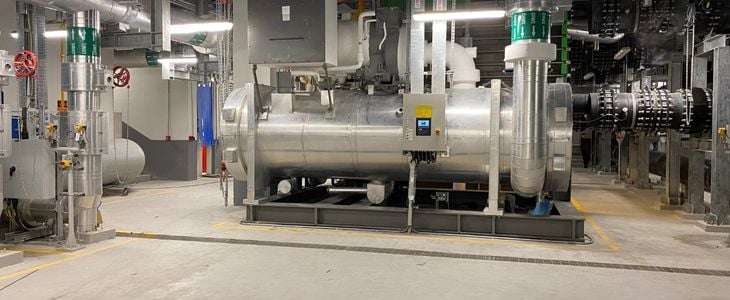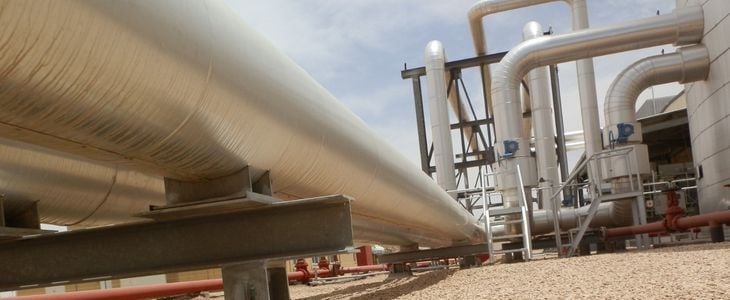The quest for increased efficiency and sustainability in heating technologies have led to multiple iterations and formulas in recent times. In this search, both combined heat and power (CHP) and heat pumps have been considered as viable options for improving performance in district heating structures, as well as alternatives to the more traditional fossil-fuel models that took enormous tolls on the environment.
In this context, we examine the advantages and disadvantages of CHP energy as opposed to installations based on heat pumps, in regards to what the right technology might be for long-term investments.
CHP - Sustainable option in heating technologies
From the industrial sectors to urban developers, a multitude of actors are currently in a search of developing new heating technologies that solve two key issues: an increased efficiency and a cut down on carbon emissions, all while remaining economically viable from a full life cycle perspective that includes operational and maintenance costs.
As new regulations such as the European Green Deal impose environmental restrictions, companies must hurry to find a system that is both legally compliant and feasible from an economic point of view.
In fact, there are many ways in which new technologies are tackling efficiency in heating. Among these strategies, picking the right among all energy sources for heating remains a key choice, and this is exactly where the debate between choosing a CHP system or heat pumps can be framed.
While district heating structures stand out as a more sustainable approach to heating and are helping lead decarbonizing efforts, diverse technologies can enhance or diminish a project. As such, it’s important for DH projects to employ appropriate heating sources that further the possibilities in cost cutting and sustainability.
CHP energy and heat pumps: how each system works
Both combined heat and power and heat pumps are used today as an alternative to traditional systems such as boilers and electric heaters.
As such, both systems can achieve better efficiencies provided with the right heat source, and are based on the principle of minimizing energy waste in a typical heating system.

However, they both present different ways to work:
- Combined heat and power (also known as CHP energy, CHP plant or CHP system) uses residual heat from burning fossil fuels in order to obtain electric energy. Through this cogeneration process, a typical CHP plant will translate energy input into 40% useful energy for heating and 40% useful energy for electricity.
- Heat pump systems represent a flexible and extremely efficient model. These technologies work by transferring heat from a lower temperature source to the consumer, generating a refrigeration cycle.
Employing the right energy source, heat pump systems have been shown to generate a 20% increase in heat recoveries and unmatched COP efficiencies as well as other sustainability advantages, which we look further into below in this article.
There are a number of opportunities to incorporate heat pumps into efficient temperature models. For example, geothermal energy as a source has been successfully included in district heating with heat pump models, as well as employing waste heat coming from wastewater treatment plants or heat surplus from industrial plants. As such, heat pump systems allow for the incorporation of sustainable, locally-produced renewable energies.
Combined heat and power vs. heat pumps: advantages and disadvantages
When approaching both efficiency and sustainability in comparing both systems, there are a number of factors to explore. For instance, research published in 2020 by Olympios used both data-driven models and comprehensive thermoeconomic models to compare combined heat and power to heat pumps. The results suggested that centralized CHP energy is considered a profitable option today. However, it cannot offer certainties for the future: as combined heat and power structures depend on high operating and distribution temperatures they can end up turning into obsolete technologies in the medium term as their carbon savings might be minimal.
On the other hand, the same research points out how the inclusion of heat pumps allows for outstanding heat decarbonisation (between 55–62%), which makes it a key technology to achieve carbon-neutral goals. Industrial heat pumps also stand out in terms of energy efficiency, which is measured by the coefficient of performance (the ratio between how much heating energy a system generates against its consumption of electrical energy). Well-adjusted industrial heat pumps provide outstanding COP values of between 3 to 6 units.
At the same time, high-performance heat pumps present lower annual costs, which might counterbalance paybacks and return on investments. All things considered, heat pumps stand out as a viable investment in the medium and long term, as a model to guarantee both increased sustainability and efficiency.

The key for efficient heating: a tailor-made project
At Araner, we are committed to help companies achieve energy efficiency and meet environmental goals with their heating systems, all while considering the viability of each project in terms of budget and other conditions. As such, we provide an end-to-end service in devising tailor-made district heating systems that ensure low operating costs and carbon neutrality through the use of state-of-the-art technology.
Having first-hand experience and technical knowledge about the current possibilities in thermal energy, our industrial heat pumps are paired with other efficiency enhancers, such as Thermal Energy Storage tanks and Turbine Inlet Air Cooling systems, pushing thermal energy capacities to new levels.
Our work typically relies on six different stages that ensure the final result adjusts to each project’s needs and reaches out to ensure the best performance:
- At the concept design and analysis stage, where we incorporate both economic and energy efficiency factors to devise the best model possible. At this point, we analyze the available heat sources as well as all space or energy regulations to be considered.
- A second stage includes the consideration of cost-benefit ratios as well as the selection and testing of different technology models, including electricity costs and all potential related risks and opportunities for the project.
- The third stage involves a complete project overview and is partly guided by previous decisions in terms of the best system design considering the most efficient economic results. As such, final decisions are taken from a holistic point of view that incorporates all disciplines and stakeholders involved in the project in order to reach the best possible result.
- The next step involves the manufacturing and control process. As heat pump designs can often be complex, the control step is key to guarantee quality and a high performance. At this point, we also ensure all equipment is designed as per international manufacturing codes and inspected. We’re also attentive to guarantee all subcontractors follow required guidelines and partners are involved in a coordinated manner.
- During our commissioning and start-up, our senior experts test and supervise all processes in order to guarantee the fulfillment of expectations around a project.
- Finally, we can also offer guidance during operation and maintenance processes. For instance, we provide operation manuals adapted to the singularities of each projects and adjusting to different scenarios (from normal operation to shutdown and alarm set points), ensuring all equipment is operated following design guidelines.
Additionally, our maintenance service will reduce undesired downtime periods or failures, as well as facilitate durable performance to the highest standards.
Through these 6 stages, we’re able to provide a structure for comprehensive insights, guaranteeing our heating technologies remain cost-effective in the long term and match what the future of heating looks like.
Want to learn more about current heating technologies and heat pumps overpassing previous efficiencies achieved by combined heat and power? Get in touch with us: at Araner, our team can help you optimize heating structures and maximize your project’s energy efficiencies all while complying with current energy regulations.










